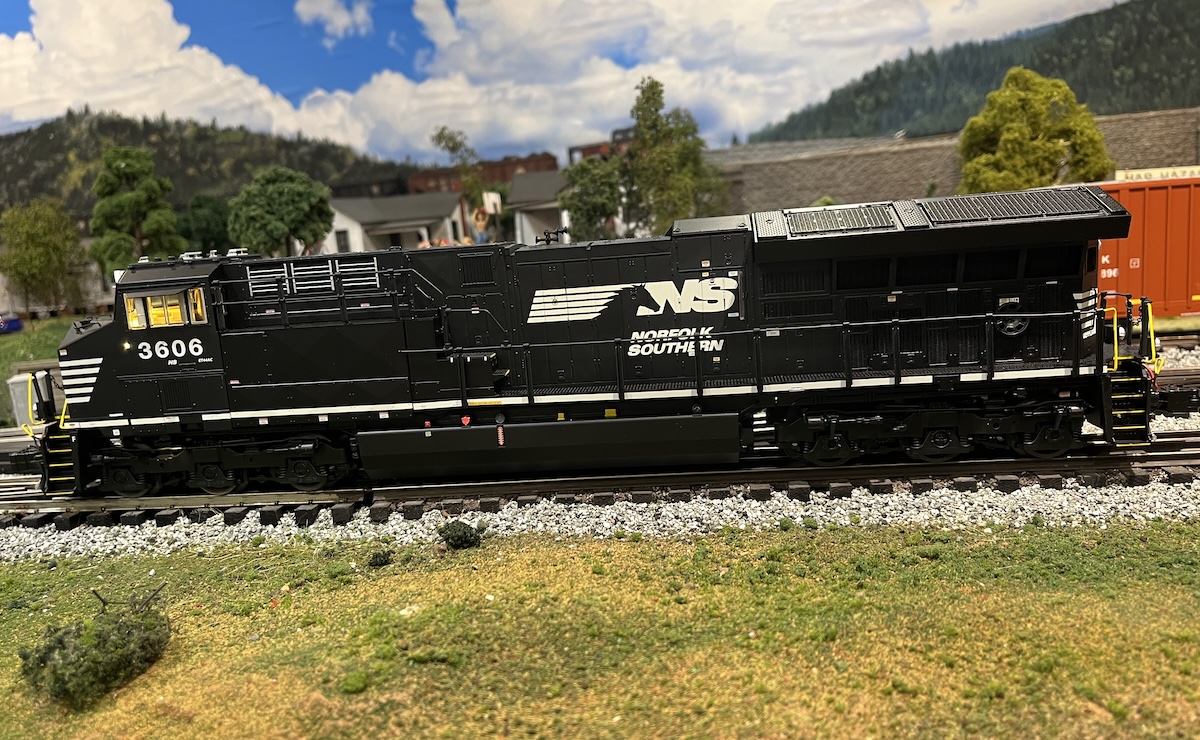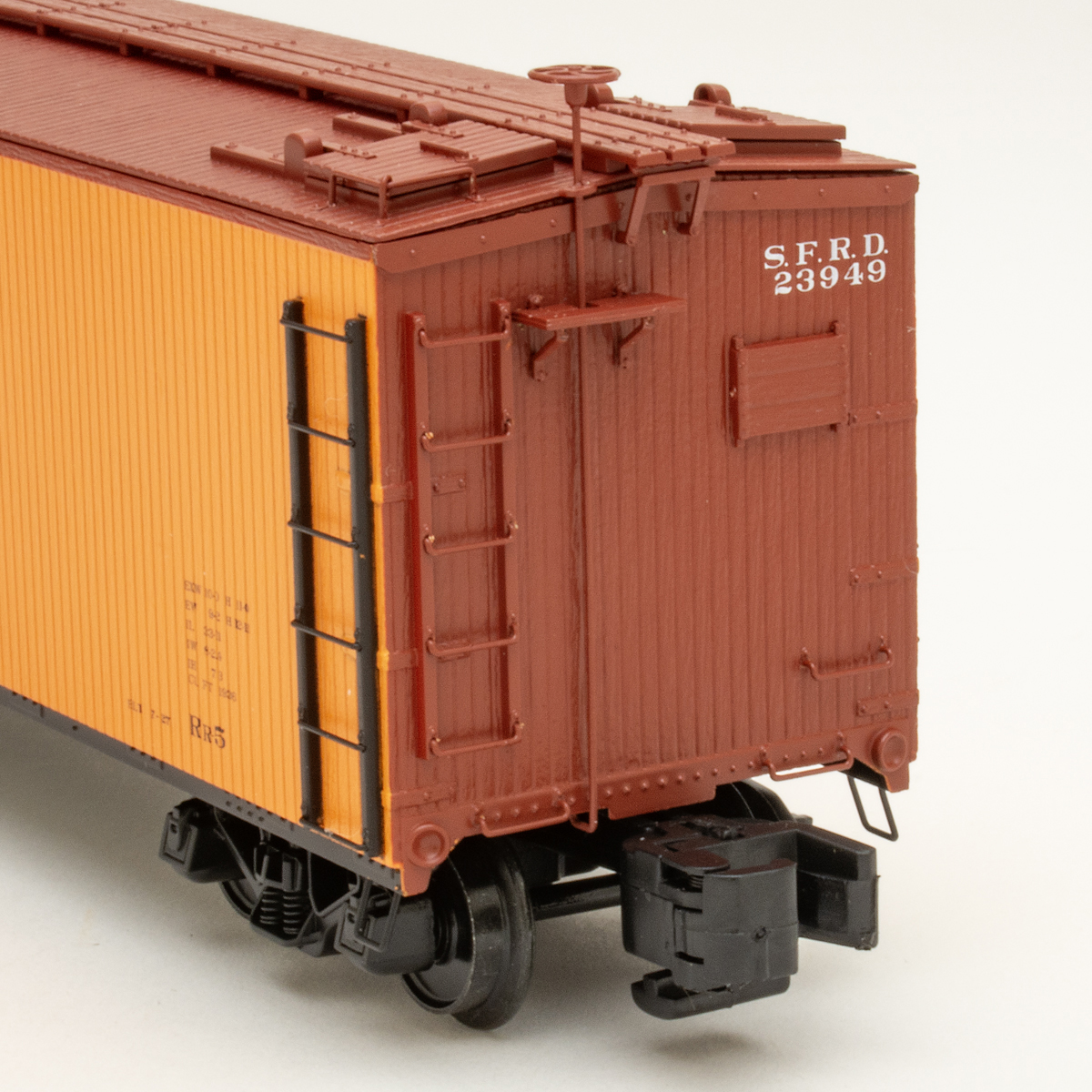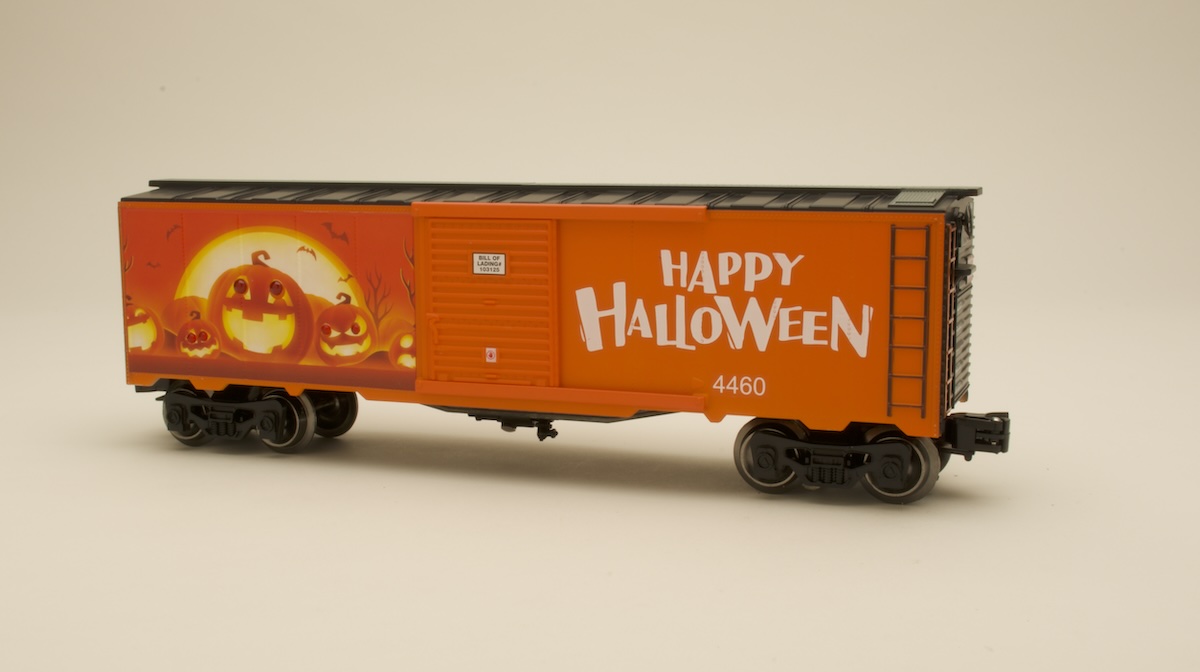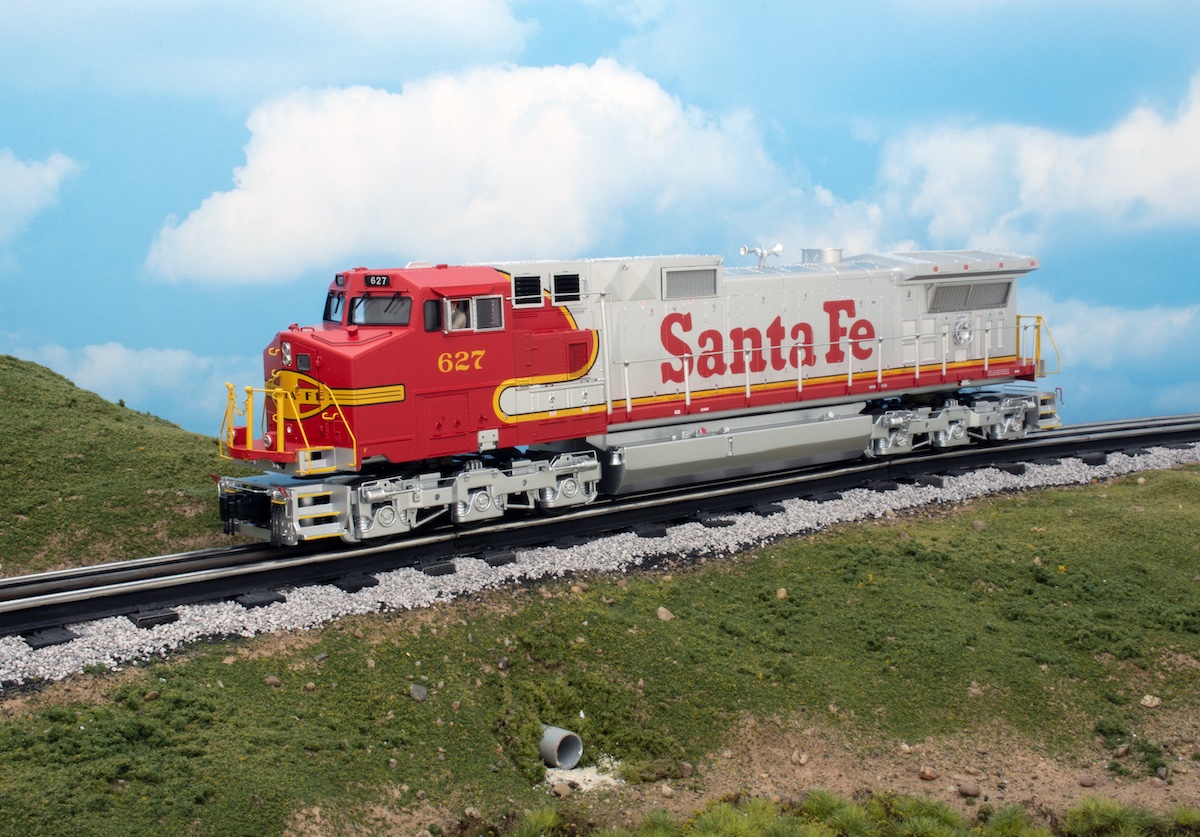The I-class 2-10-0 Decapods are a case in point. The Pennsy rostered 598 of these brutish beauties, the first in 1916. The I-class replaced L1s-class 2-8-2 Mikados on steep Allegheny grades. With the largest steam boilers on the railroad and nearly 70 feet of grate space in the firebox, the I-class locomotives could offer 90,000 pounds of drawbar pull. Only the Western Maryland had Decapods that were larger. The Pennsy built 123 Decapods at the road’s own shops, and another 475 came from Baldwin.
According to Al Staufer’s book Pennsy Power, the I-1s were used mainly in the Alleghenies, but they could be seen as far west as central Ohio and as far north as Elmira, N.Y. One of their last assignments was running heavy ore drags out of Northumberland, Pa. The Pennsy finally dropped Decapods from its roster in 1957, and just one, no. 4483, survives for future generations.
The model
As I’ve said in any number of previous reviews of RailKing steamers, I appreciate the fact that they are simplified (and less expensive) re-creations of specific prototype locomotives. Accordingly, I give them more slack than if I were evaluating a scale model.
That having been said, the first thing that grabbed me was how undersized the air tanks are on the nose of the engine. Sure this is a miniaturization of a Decapod, but these must have been left in the dryer with the setting on “linen.” They look way too small, even using my pretty liberal standards. If it made me frown a bit, I know that many Pennsy fans will notice it right off.
Otherwise, the Decapod fits right in with other RailKing steamers. The front of the engine is clearly Pennsy, with a round number plate, a high-mounted headlight, and number boards on either side of the headlight. There are illuminated markers on the nose.
The boiler neatly replicates a clearly Pennsylvania design, from the aforementioned air tanks out front to the distinctive firebox at the rear. This includes cast-in piping, domes, and other standard engine features.
Coupler-to-coupler, the model including its tender measures 221/2 inches long, or 90 feet in O scale. At least three different tenders were utilized with the real I-class engines: the four-axle 90F82 and 130F82A, and the six-axle 180F82. The RailKing model uses the 180F82. With that tender, the prototype measures 96 feet, 1/2 inches.
The tender has a neat brakeman’s “dog house.” The coal load is cast in and looks satisfactory. The tender also features a working backup light, which so far has been fairly uncommon in the RailKing line.
On the test track
Our RailKing Decapod with ProtoSound 2.0 and its accompanying cruise-control electronics delivered commendable performance. The Decky’s low-end average speed was 9.6 scale mph, while the high end was 113.6 scale mph (Staufer’s Pennsy Power cites the engines highest authorized speed as being 50 mph!). Our drawbar pull measurement was 1 pound, 12 ounces, equal to 84 modern, free-rolling cars.
At 18 volts with a 25-car mixed vintage and make freight train in tow, the engine was timed at 77.9 scale mph.
The first and fourth set of the Decky’s drivers are flanged, and the others are blind. We didn’t experience any woes running on O-42 or wider radius curves or even O-42 switches. All those drivers moving at a slow speed were actually quite a sight to see!
The sound system was quite good and the smoke unit was up to the standard “open the basement windows” level of exhaust.
Due to the unavailability of MTH’s DCS system, we were only able to test the locomotive in conventional mode.
When we tested the Decapod with the MRC Dual Power O-27 transformer, we found that the engine’s sound would begin to power up, the whistle would blow, and the engine would not move. The locomotive ran properly with all other transformers, although accessing the ProtoSound 2.0 extra features in conventional mode through Lionel’s CAB 1 controller can be iffy.
Air tanks aside for a moment, I liked the overall look and capability of the RailKing Decapod. Pennsy fans will at least want to check it out for fidelity to the Standard Railroad of the World. The rest of us will want to see it for the unique nature of the wheel arrangement!














